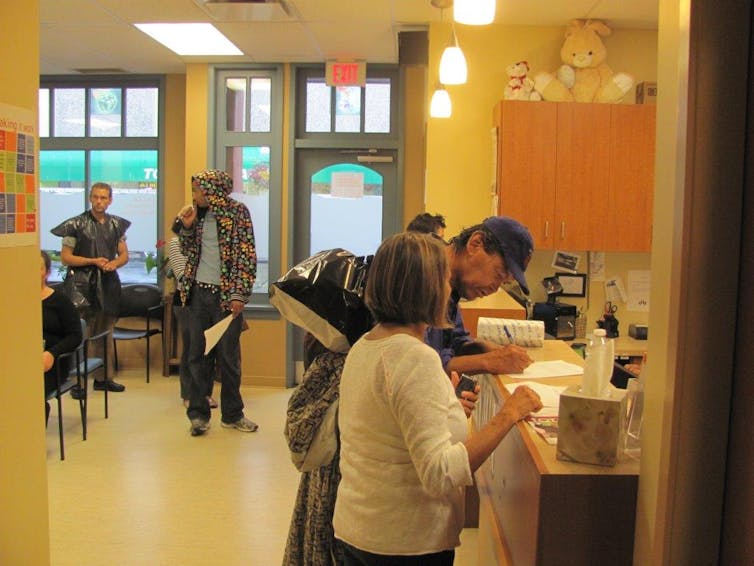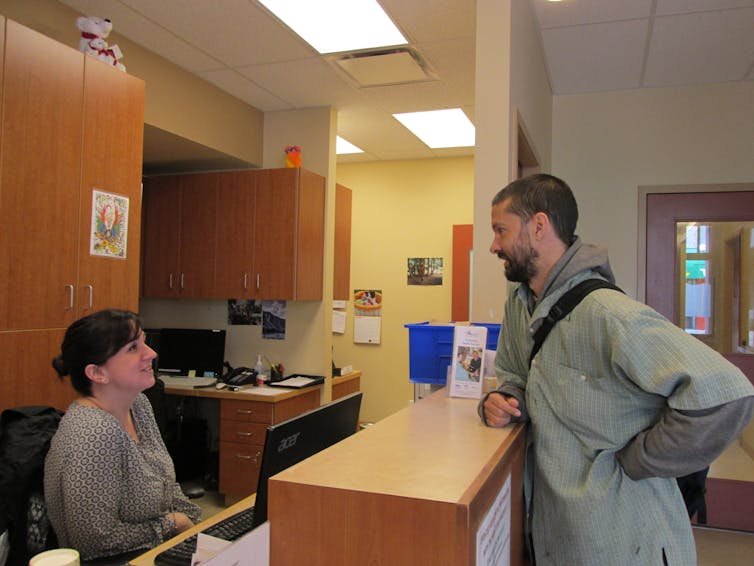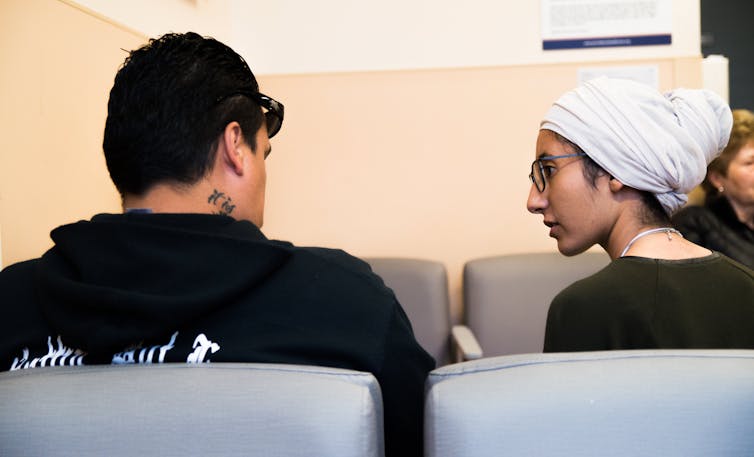
Annette J. Browne, University of British Columbia
Promoting equity in health care improves people’s health. Doing so can be low cost and have high impact. Based on more than 15 years of research, we provide concrete examples of actions that can be taken by people working in health care — and the impact on patients.
Our interdisciplinary team of EQUIP Health Care researchers from universities across Canada has been studying strategies for improving care. We are among the first to show that providing more equity-oriented health care predicts improvements in important patient health outcomes across time.
This benefit occurs despite the negative toll of poverty, racism and other forms of discrimination on peoples’ health.
Read more: 9 ways racism impacts maternal health
Equity affects mental health
All over the world, people face barriers to health care stemming from poverty, discrimination and the ongoing effects of trauma and violence. This leads to health inequities, defined by the World Health Organization as avoidable and unfair differences in people’s health.

Our evidence shows that when care is more equity-oriented, patients feel more comfortable and confident about the care they receive, leading to more confidence in their own ability to prevent and manage health problems. They also report fewer depression and trauma symptoms, less chronic pain and improved quality of life.
A focus on harm reduction
Equity-oriented health care means paying particular attention to those at greatest risk of poor health and that typically means people who are most affected by the negative impacts of social conditions such as poverty, lack of affordable housing, stigma, racism and other forms of discrimination.
It involves trauma- and violence-informed care. That is, understanding and working to limit the effects of trauma and violence on peoples’ lives, their health and their health-care experiences.
It also involves culturally safe care: reducing power imbalances, racism and discrimination that often play out in health-care encounters.
The dimension of harm reduction is also important. This involves a focus on preventing the harms of substance use, including stigma.
In our model, these three key dimensions overlap and can be tailored to any health-care setting. We have isolated 10 strategies that flow from these key dimensions to guide health-care workers and their organizations in increasing their ability to provide equity-oriented health care. They include attending to power differentials and actively countering racism.
Hiring an Elder, reducing stigma
Equity-oriented health care does not have to be expensive or time-consuming — many of the strategies are about helping people feel safe and comfortable.
They include avoiding judgemental language, not limiting visits to “one problem” and greeting people warmly and promptly when they call or visit. They can be as simple as providing water or coffee in the waiting room.

Here are some examples of how the clinics involved in our first EQUIP study, all in different cities and towns, refined their practices to be more equity-oriented:
Reception staff decided to change their phrasing and tone of voice in response to phone calls from patients to book appointments. They wanted to ensure that people did not feel dismissed or demeaned when they called.
A clinic serving high numbers of Indigenous people decided to hire a part time Elder who could talk with people as they waited to see a doctor or nurse.
Staff initiated a chronic pain group to help patients learn about pain management. This was meaningful for people, because of how living with chronic pain is impacted by, and deepens, poverty, substance use and loneliness.
Staff developed new harm-reduction policies and practices to reduce stigma and improve support for people living with substance use issues.
Staff purposely used new trauma- and violence-informed approaches to provide better care for new immigrants and refugees arriving in Canada with significant histories of trauma and violence.
Adapting for emergency departments
Given the impact of the EQUIP model, we have developed free online Health Equity Tools and Equipping for Equity Modules designed to help health-care policy-makers, organizations and providers deliver equity-oriented health care. These include multi-media resources and organizational self-checks.

New studies are underway to adapt and test EQUIP in emergency departments, mental health agencies and hospital units — as we generate new evidence about the transformative potential of this approach to improve care for everyone.
Annette J. Browne, Professor & Distinguished University Scholar, University of British Columbia
This article is republished from The Conversation under a Creative Commons license. Read the original article.

